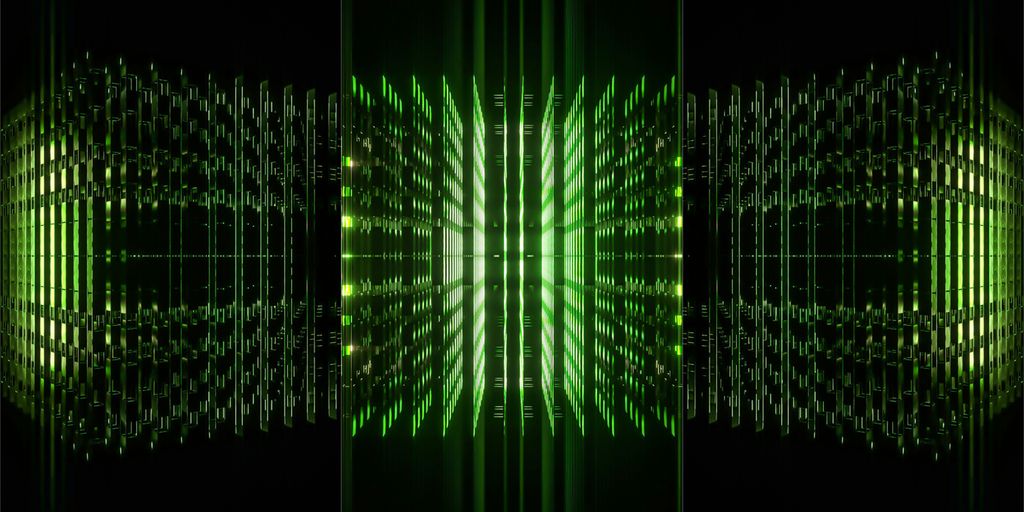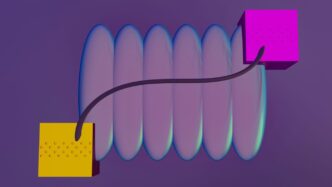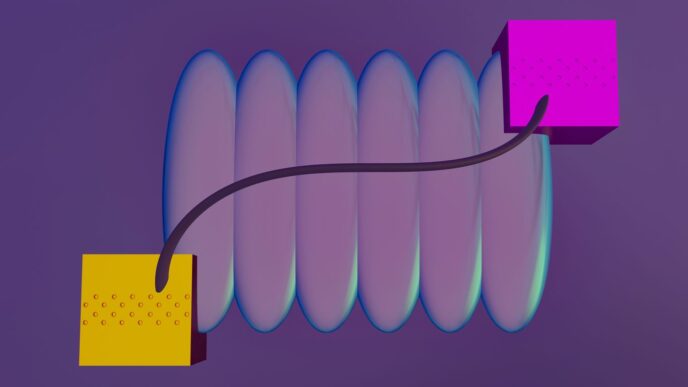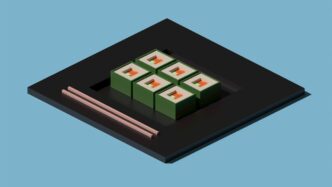Quantum computers are pretty amazing, right? They promise to solve problems that regular computers can’t even touch. But, like anything new and super advanced, they come with their own set of problems. It’s not all sci-fi magic, and there are some real hurdles to overcome. Let’s dig into the disadvantages of quantum computers and see why they’re not quite ready to take over the world just yet.
Key Takeaways
- Building and running quantum computers costs a lot of money, and it’s hard to tell if they’ll ever be worth the investment.
- Quantum computers are super delicate and need really specific, cold conditions to work right, making them tricky to handle.
- Coming up with new ways for quantum computers to solve problems is hard, and old computer methods don’t usually work.
- Quantum computers make a lot of mistakes, and fixing these errors makes them even more complicated to build and use.
- Making quantum computers bigger and connecting their parts is a huge challenge, limiting what they can do right now.
The High Cost of Quantum Computing
Prohibitive Per-Qubit Expenses
Let’s be real, quantum computing isn’t cheap. We’re talking serious money. The cost of a single qubit can be astronomical, and when you need a whole bunch of them to do anything useful, the price tag just explodes. It’s like buying a super fancy sports car, but instead of driving it, you need to keep it in a special, super-cooled garage. And that garage? Also costs a fortune. The price per qubit is a major barrier to entry, limiting who can even play in this field. For example, quantum computing systems with 1,000 qubits can easily run over $100 million.
Significant Research and Development Investments
It’s not just the hardware, either. Developing quantum algorithms and figuring out how to control these qubits? That takes a ton of research and development. We’re talking about teams of brilliant scientists and engineers, years of work, and a whole lot of trial and error. It’s like trying to build a rocket ship while simultaneously inventing the laws of physics. The investment needed is huge, and there’s no guarantee of success. Plus, the algorithms that work on classical computers aren’t relevant to quantum computers, so it’s like starting from scratch.
Uncertain Commercial Viability
Okay, so you’ve spent a fortune on qubits and R&D. Now what? The big question is whether quantum computers will actually be commercially viable. Will they be able to solve problems that classical computers can’t, and will people pay for that? There’s a lot of hype around quantum computing, but the reality is that we’re still a long way from seeing widespread applications. It’s a risky investment, and there’s a real chance that it won’t pay off. The hype can lead to unrealistic expectations, which is dangerous because quantum computing requires sustained investment for the long term.
Fragility and Environmental Sensitivity
Quantum computers are incredibly sensitive beasts. It’s not like your laptop that can handle being jostled around a bit. These machines need extreme care, and even the slightest disturbance can throw everything off. It’s a major hurdle in making them practical for everyday use.
Maintaining Quantum Coherence
Quantum coherence is what allows qubits to exist in a superposition, which is the foundation of quantum computing’s power. Maintaining this coherence is a huge challenge because qubits are easily disturbed by their environment. Any interaction with the outside world can cause decoherence, where the qubit loses its superposition and collapses into a definite state, ruining the computation. Think of it like trying to balance a house of cards during an earthquake – nearly impossible.
Extreme Temperature Requirements
To minimize environmental noise and maintain coherence, many quantum computers need to operate at extremely low temperatures, often just a fraction of a degree above absolute zero. This requires specialized and expensive cooling systems, like dilution refrigerators. These refrigerators are not only costly to buy and maintain, but they also consume a lot of power. It’s a far cry from the energy efficiency we’re used to with classical computers. The need for such extreme cooling adds significantly to the overall cost and complexity of quantum computing.
Vulnerability to External Interference
It’s not just temperature that’s a problem. Quantum computers are also vulnerable to other forms of external interference, such as electromagnetic radiation, vibrations, and even stray particles. These interferences can introduce errors and cause decoherence. Shielding quantum computers from these external factors requires careful design and construction, adding another layer of complexity and cost. It’s like trying to build a fortress around something incredibly delicate. Quantum sensing is one area where this sensitivity is being exploited for advanced measurement technologies, but for computing, it’s a major headache.
Challenges in Quantum Algorithm Development
Developing algorithms for quantum computers isn’t a walk in the park. It’s a whole different ball game compared to classical programming. You can’t just take existing classical algorithms and expect them to work on a quantum computer. It’s like trying to fit a square peg in a round hole. Let’s look at some of the specific challenges.
Difficulty in Formulating Quantum Algorithms
Coming up with new quantum algorithms is tough. It requires a completely different way of thinking about computation. We’re so used to the classical way of doing things that it’s hard to wrap our heads around how to leverage quantum mechanics to solve problems. It’s not just about translating classical code; it’s about inventing entirely new approaches. Plus, there’s no guarantee that a quantum algorithm will actually be faster or more efficient than a classical one. It’s a lot of trial and error, and a lot of head-scratching.
Limited Applicability of Classical Algorithms
Many classical algorithms just don’t translate well to the quantum world. For example, a lot of the techniques we use for indexing data in databases or search engines aren’t relevant to the quantum computing model. The programming model is much more austere. You can’t just take your favorite sorting algorithm and expect it to magically work on a quantum computer. It requires a complete rethinking of the underlying principles.
Need for Novel Computational Approaches
To really unlock the potential of quantum computing, we need to develop entirely new computational approaches. This means exploring new mathematical frameworks, new programming paradigms, and new ways of thinking about information processing. It’s a huge undertaking, and it requires a lot of creativity and innovation. We need to move beyond just trying to adapt classical algorithms and start exploring the unique capabilities of quantum systems. It’s a long road, but the potential payoff is enormous. We need to invest in research and development to explore these novel computational approaches and unlock the true power of quantum computing.
Error Rates and Correction Complexities
Quantum computers are super cool, but let’s be real, they’re also super sensitive. One of the biggest headaches is dealing with errors. Unlike your regular computer that can chug along pretty reliably, quantum computers are prone to making mistakes, and those mistakes can really mess things up. It’s like trying to build a house of cards in a wind tunnel – frustrating, to say the least.
High Error Rates in Qubit Operations
Qubits, the basic building blocks of quantum computers, are just naturally error-prone. They’re easily disturbed by things like temperature fluctuations, electromagnetic radiation, and even just tiny vibrations. This leads to high error rates in the operations performed on them. Think of it like this: every time you try to do something with a qubit, there’s a good chance it’ll get it wrong. And these aren’t just small typos; they can completely throw off the calculation. The error rates are typically proportional to the ratio of operating time to decoherence time. This means any operation must be completed much more quickly than the decoherence time.
The Dominant Role of Error Correction
Because qubits are so fragile, quantum error correction is absolutely essential. It’s not just a nice-to-have feature; it’s the thing that makes quantum computing even remotely possible. The idea behind error correction is to use multiple physical qubits to represent a single, more stable "logical qubit." By encoding information in a clever way, we can detect and correct errors without actually measuring the qubits (which would destroy their quantum state). It’s like having a team of proofreaders constantly checking your work and fixing any mistakes before they cause too much trouble. Quantum error correction (QEC) is used in quantum computing to protect quantum information from errors due to decoherence and other quantum noise. Quantum error correction is essential if one is to achieve fault-tolerant quantum computation that can deal not only with noise on stored quantum information, but also with faulty quantum gates, faulty quantum preparation, and faulty measurements.
Increased System Complexity Due to Error Mitigation
But here’s the catch: error correction is incredibly complex. It requires a huge number of physical qubits for every logical qubit. Some estimates suggest that we might need thousands or even millions of physical qubits to create a single, reliable logical qubit. That’s a massive overhead, and it makes building large-scale quantum computers even harder. Plus, the error correction schemes themselves are complicated and can introduce new sources of error. It’s like trying to fix a leaky faucet and accidentally flooding the entire bathroom. Researchers at IBM, for example, are developing schemes for figuring out mathematically how much error is likely to have been incurred in a computation and then extrapolating the output of a computation to the “zero noise” limit. This is called error mitigation. It works like the rounding of numbers. Thus, in the transmission of integers where it is known that the error is less than 0.5, if what is received is 3.45, the received value can be corrected to 3. Further errors can be corrected by introducing redundancy. Thus if 0 and 1 are transmitted as 000 and 111, then at most one bit-error during transmission can be corrected easily: A received 001 would be a interpreted as 0, and a received 101 would be interpreted as 1.
Scalability and Connectivity Limitations
Difficulties in Increasing Qubit Count
Getting more qubits into a quantum computer isn’t just about making things bigger. It’s about maintaining the quality of each qubit as you add more. Think of it like trying to build a house of cards – the more cards you add, the more unstable the whole structure becomes. The challenge lies in controlling the interactions between qubits and minimizing errors as the system grows. Right now, we’re still figuring out how to reliably scale up qubit numbers without sacrificing performance. Companies like IBM and Honeywell are making strides toward large-scale quantum devices, but significant challenges remain. The primary focus should be on minimizing error rates and enhancing microchip speeds.
Limited Qubit Interconnectivity
It’s not enough to just have a lot of qubits; they need to be able to talk to each other. In quantum computing, this is called connectivity. Ideally, every qubit should be able to directly interact with every other qubit. However, in reality, this is really hard to achieve. Current quantum computers have limitations on which qubits can be entangled, which restricts the kinds of algorithms you can run efficiently. This is a big deal because some algorithms require specific qubits to interact, and if they can’t, the algorithm becomes much slower or even impossible to run. The better the connectivity of a device, the faster and easier it will be for us to implement powerful quantum algorithms.
Challenges in Data Input and Output
Getting data into and out of a quantum computer is another bottleneck. Quantum computers work with qubits, which are fundamentally different from the bits that classical computers use. Converting data between these two formats is slow and can introduce errors. Imagine trying to pour water from a large container into a tiny bottle – you’re bound to spill some. Similarly, transferring data to and from a quantum computer can lead to loss of information and limit the overall speed of computations. This is an area that needs a lot of improvement to make quantum computers truly practical. Quantum networks for computation can help with this issue.
Debugging and Verification Hurdles
Debugging quantum programs? It’s not like debugging your regular Python script. Forget breakpoints and inspecting variables mid-execution. The quantum world operates under different rules, making the process significantly more complex.
Impossibility of Direct Quantum State Examination
You can’t just peek at a qubit’s state without disturbing it. This is a direct consequence of quantum mechanics. Measuring a qubit collapses its superposition, meaning you only get one result (0 or 1), and you’ve destroyed the very state you were trying to observe. It’s like trying to check if a lightbulb is on without looking at it – the act of checking changes the state. This makes traditional debugging methods, where you examine the values of variables at different points in the program, completely impossible. We can’t directly observe the quantum state to verify its correctness.
Probabilistic Nature of Quantum Results
Quantum algorithms are probabilistic. Running the same quantum program multiple times won’t necessarily give you the same answer. Instead, you get a distribution of results, and the correct answer is the one that appears most frequently. This makes it difficult to determine if an error is due to a bug in your code or simply the inherent randomness of the algorithm. You have to run the program many times and analyze the results statistically, which can be time-consuming and resource-intensive. It’s like trying to find a needle in a haystack, but the haystack keeps changing shape. The probabilistic nature of quantum results makes it hard to pinpoint the source of errors. Error mitigation is key to error-reduction methods.
Lack of Traditional Debugging Tools
Classical programmers rely on a suite of debugging tools: debuggers, profilers, static analyzers, etc. These tools are largely absent in the quantum world. Because of the challenges mentioned above, it’s difficult to create tools that can effectively debug quantum programs. We’re essentially flying blind. This forces quantum programmers to rely on more indirect methods, such as carefully designing tests and simulations to verify the correctness of their code. The absence of traditional debugging tools makes the development process slower and more challenging. The NISQ limitations make it even harder.
The Hype Versus Reality of Quantum Computing

Overstated Capabilities and Misconceptions
Okay, let’s be real. You’ve probably heard some wild stuff about quantum computers. Like they’re going to solve every problem under the sun, or that they’ll make regular computers obsolete overnight. That’s just not the case. There’s a ton of hype surrounding this tech, and it’s easy to get caught up in the excitement. Some people think quantum computers will operate faster than light, or that they’ll break all encryption. The truth is more nuanced. Quantum computers could revolutionize industries, but they won’t replace current systems. They might challenge some security encryptions, but not all of them, and not immediately. It’s important to separate the facts from the fiction.
Current Hardware Limitations
Right now, quantum computers are super sensitive and error-prone. They need crazy-specific conditions to even function, like temperatures colder than outer space. Maintaining quantum coherence is a huge challenge. Plus, scaling up the number of qubits is proving to be really difficult. It’s not like we can just keep adding more and more qubits without running into major problems. The more qubits you add, the more unstable the system can become. And even if we do manage to build bigger quantum computers, there’s no guarantee we’ll know how to use them effectively. Getting data in and out of these machines is also a major bottleneck. No one knows how to efficiently encode large amounts of data into qubits. There’s no such thing as a quantum hard drive. It’s a long road ahead.
The Long Road to Practical Applications
While quantum computers hold immense promise, we’re still years away from seeing them used in everyday applications. A recent report even suggested that there are no commercially viable applications for near-term quantum computers that can’t already be tackled with conventional computers. Quantum computing requires sustained, focused investment for the long term. The fundamental physics are still in development, and consistent results won’t appear for at least 5 to 10 years — and possibly much longer. It takes time and research and development effort and resources to discover what work. So, while it’s exciting to think about the possibilities, it’s important to keep our expectations in check. We need to focus on the real challenges and work towards building practical, reliable quantum computers that can actually solve real-world problems. The potential is there, but it’s going to take a lot of hard work to get there.
Conclusion
So, we’ve talked a lot about the tough parts of quantum computers. They’re super expensive, really hard to build, and need to be kept colder than anything you can imagine. Plus, getting them to work for more than a tiny moment is a huge challenge. It’s clear that while quantum computers show a lot of promise for solving some really big problems, like breaking tough codes or speeding up machine learning, they’re not going to replace our everyday laptops anytime soon. There’s still a ton of work to do before these machines are practical for widespread use. It’s a fascinating area, but we’re definitely in the early stages, and there are many hurdles to get over.
Frequently Asked Questions
Why are quantum computers so costly?
Quantum computers are incredibly expensive right now. A single quantum bit (qubit) can cost around $10,000, and that’s before you even think about all the research and development needed to make them work. Building a useful quantum computer could easily cost billions of dollars, and we’re not even sure yet if they’ll be worth all that money in the long run. For them to become common, the cost of each qubit needs to drop a lot, but nobody knows how that will happen.
What makes quantum computers so sensitive?
Quantum computers are super delicate. They need to be kept extremely cold, almost as cold as space, to work correctly. Even the tiniest bit of shaking or heat can mess them up. This makes them really hard to build and keep running, and they can only work for very short periods, which isn’t long enough to solve big problems yet.
Is it hard to write programs for quantum computers?
It’s tough to create programs for quantum computers because they work so differently from regular ones. We can’t just use our old computer programs on them. We need to invent entirely new ways of thinking about problems and solving them using quantum rules. This takes a lot of time, effort, and smart people to figure out.
Do quantum computers make a lot of errors?
Yes, quantum computers make a lot of mistakes. The tiny parts they use are very unstable, so errors happen often. To fix these errors, we need to add a lot of extra stuff to the computer, which makes them even more complicated and harder to build. It’s like trying to build a perfect tower with shaky blocks – you need a lot of support to keep it from falling over.
Why is it difficult to make quantum computers larger?
It’s really hard to make quantum computers bigger and connect all their parts. We can’t easily add more qubits, and the ones we have don’t always connect well with each other. Also, getting information into and out of these computers is a big challenge. These problems make it tough to build powerful quantum computers that can handle a lot of data.
How do you fix problems in a quantum computer?
Checking for mistakes in quantum programs is almost impossible. We can’t just look inside a quantum computer to see what’s going on, and the results it gives are often based on chance, not always the same answer every time. This means we don’t have the usual tools to find and fix problems, making it a real headache for programmers.














